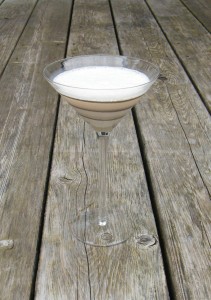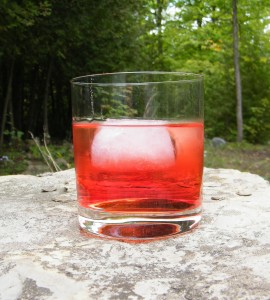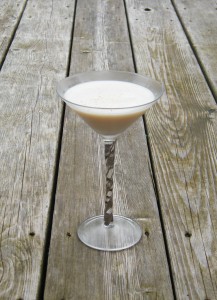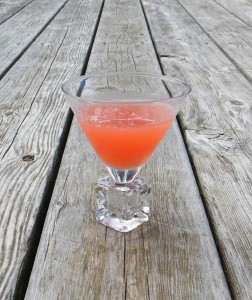I’m off to Italy in a couple of days, so to prepare myself, I’m exploring the liquors and liqueurs that originated in Italy. I might be packing my bags at the last minute, scrambling to find my passport as the taxi is waiting outside, but one thing is for sure, I’m going to know exactly what to drink when the plane touches down. So, come with me as armchair travelers, learn something about these ‘succulento’ liquids, and try a new cocktail or two along the way.
Italy is well known for it’s fantastic wines (“in vino veritas” etc.); Valpolicella, Barolo, Pinot Grigio, Verdicchio and one of my absolute favorites (tried first at Canaletto, a restaurant in the Venetian in Las Vegas), the bubbly and brilliant Prosecco. This however, doesn’t mean that Italy is a slouch when it comes to liquors and liqueurs. I have chosen 5 such ingredients to showcase in this post, ones that should be readily available in your neighbourhood liquor store. Before giving up the recipe goods, I’m going to treat everyone, myself included, to a wee little history lesson regarding the 5.
Amaretto is a sweet almond-flavoured liqueur, made from a base of apricot and/or almond pits. The original version was made in Saronno, Italy, with the word ‘Amaretto’ meaning “a little bitter” in Italian. Despite the known history on the introduction of almonds into Italian cuisine, more recent takes on the meanings and origins have come about, further popularized by the two major brands. Questionable factuality aside, these tales hold a sentimental place in Saronno culture. In 1525, a Saronno church commissioned the artist Bernardino Luini, one of Leonardo da Vinci’s pupils, to paint their sanctuary with frescoes.Luini was in need of a model to depict Madonna, finding his inspiration in a young widowed innkeeper, who became his model and (in most tales) lover. Out of gratitude and affection, she wished to give him a gift so she steeped apricot kernels in brandy and presented the liquid to Luini. Disaronno claims its “originale” amaretto’s secret formula is unchanged from the year 1525, and claims the Luini tale as its own history. Production of Disaronno Originale remains in Saronno to this day.
Campari is an apéritif obtained from the infusion of herbs and fruit in alcohol and water. and is characterized by its dark red color. Invented by Gaspare Campari in Novara, Italy in 1860, the original recipe still in use today is kept secret (apparently only one person in the world knows the entire formula). Originally coloured with carmine dye which is derived from crushed cochineal insects, giving the drink its distinctive red color, it is now coloured with ‘artificial color’, according to the label. In 1904, Campari’s first production plant was opened in Sesto San Giovanni, near Milan, Italy and, what seems to be as a very smart marketing move, the company required bars that bought Campari to display the Campari Bitters sign. Under the direction of Davide Campari, Gaspare’s son, the company began to export the beverage, first to Nice in the heart of the French Riviera, then overseas, now being found in over 190 countries.
Frangelico is a hazelnut and herb-flavored liqueur produced in Canale, Italy. Released in the 1980s, Frangelico’s origins actually date back more than 300 years to the existence of early Christian monks living in the hills of Northern Italy. According to Barbero, Frangelico’s Italian manufacturer, its name is based on the legend of a hermit named Fra Angelico who “created unique recipes for liqueurs.” The bottle however, most closely resembles the habit of a Franciscan friar, while Fra Angelico (a Dominican) would have worn a white robe without the cincture. To produce Frangelico, nuts are crumbled and combined with cocoa, vanilla berries, and other natural flavors, and then left to soak in the base spirit. After the spirit has absorbed the flavor of the ingredients, the liqueur is filtered, sweetened, and bottled.
Limoncello is a lemon liqueur produced primarily in Southern Italy, especially in the region around the Gulf of Naples, the Sorrentine Peninsula and the coast of Amalfi and islands of Procida, Ischia, Capri, Sicily and Sardinia. Traditionally, it is made from Sorrento lemon peel, though most lemons will produce satisfactory limoncello. The history of limoncello bends through a series of anecdotes and legends. Its paternity is competed by sorrentini, amalfitani and capresi. In small plots of kilometres, three populations boast of a production of limoncello passed on by various generations. In Capri, someone says that its origins are linked to the events of the family of the businessman Massimo Canale who, in 1988, registered the first trademark “Limoncello”.
Sambuca is an anise-flavoured, usually colourless, liqueur, the most common variety being ‘white sambucato’. Other varieties are ‘black sambuca’ which is deep blue in colour and ‘red sambuca’ which is bright red. Oils obtained from star anise are added to pure alcohol, a concentrated solution of sugar, and other flavouring. The etymology is disputed, something that seems to be rampant in the Italian liqueur world! The Molinari company states that the name Sambuca comes from the Arabic word ‘zammut’, which was the name of an anise-flavored drink that came to Civitavecchia on ships coming from the east. The Oxford English Dictionary states, however, that the term comes from the Latin word sambucus, which means “elderberry”. Other proposals are: 1) it came from from the Indian name for fennel, sounf or soambu 2) it came from “sambuq”, a type of Arabic ship which may originally have been used to import the drink. The Greek word Sambuca was first used as the name of a different anise liquor created in Civitavecchia about 130 years ago.The first commercial version started at the end of 1800 in Civitavecchia thanks to Luigi Manzi who started selling Sambuca Manzi, still being produced today. In 1945 commendatore Angelo Molinari started producing Sambuca Extra Molinari, helping the diffusion of Sambuca all over Italy.
Now on to the fun stuff!! Cin cin or Salute, for you less formal folks :).
1/2 oz Amaretto
1/2 oz (dark) Creme de Cacao
2 oz (light) Cream
Pour all ingredients in a shaker over ice. Shake vigorously and strain into a chilled cocktail glass.
Comments: OMG! I never, say ‘OMG’, but wow, this is incredible! I didn’t have dark creme de cacao so substituted white (which is actually clear) which brings up a good point. Should you not try a cocktail because you don’t have exactly the right ingredients? Heck no!! You never know, you might just come up with something even better than the original :).
Tasting Notes: perfect blend of chocolate and almond; like a frappaccino with booze; my man said “frou frou girl drink but would certainly tame some uber-spicy wings”
1 oz Gin
1 oz Campari
1 oz Sweet Vermouth
Stir over ice and pour into a rocks glass. Garnish with a lemon twist.
Comments: Okay, I know that this is a classic cocktail and I should be jumping up and down, but I am not a big fan. It did grow on me, but alas, not enough for me to have it again. Well, not until I am in Italy anyway, ’cause every cocktail deserves a second chance :).
Tasting Notes: astringent; several layers of flavour, almost in competition with each other; dislike the aftertaste
1 shot Amaretto
1/2 shot Frangelico
1/2 shot Galliano
1 shot Cream
1 shot Milk
Pour all ingredients in a shaker over ice. Shake, and then strain into a chilled cocktail glass. Garnish with a grating of fresh nutmeg.
Comments: If you’re looking for an Italian version of eggnog, look no further! The grated fresh nutmeg is really a mandatory ingredient to round out this flavour profile.
Tasting Notes: tastes like a grownup melted milkshake; very smooth; nice almond flavour but not overpowering
1 1/4 oz Vodka
3/4 oz Campari
1/4 oz Limoncello
3/4 oz Orange juice
3/4 oz Sweet and sour
Shake all ingredients together over ice and strain into a chilled cocktail glass. Garnish with a lemon twist.
Comments: As you can see from the photo, this is a beautiful drink! The look of this drink and its lovely name are in direct opposition to the taste. This was by far my least favorite drink in this post, but I still had to include it as my mild aversion to Campari shouldn’t ruin things for everyone else. Try it, like it, love it, hate it…. ’tis up to you….
Absinthe Without Leave
1 part Absinthe
1 part Irish Cream liqueur
1 part Sambuca, black
Layer ingredients carefully into a shot glass. Put Absinthe first, followed by Sambuca and then liqueur. If done properly each will remain separate, forming an attractive green-based beverage.
Comments: Based on the amount of sambuca we had left in our bottle, I decided that ‘1 part’ would equal ‘1 ounce’. Bad, bad, bad idea!! Absinthe has a very high alcohol content, 45-74% (ours, from the Czech Republic, came in at 70%) making for a very potent drink. Tread lightly, folks…
Tasting Notes: sambuca and absinthe team up to make an uber-anise taste; irish cream tethers the anise slightly but it is still very licoricy; very strong; make sure you use black sambuca as white makes for a sludgy colour (hence, no pretty photo)



